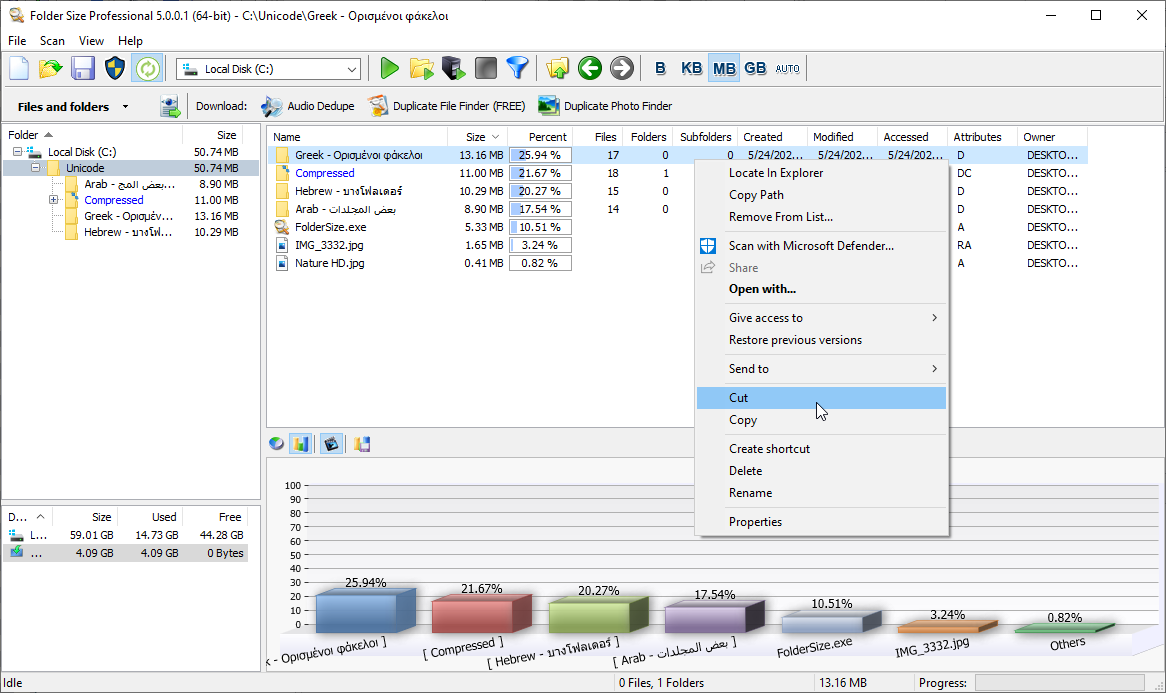
Folder Size – Freeware Disk Size Analysis
Freeware Folder Size 3.4.0.0 Can Reveal Lost Disk Space And Is Packed With Six New File Reports
This new release of Folder Size provides a lot of new features and improvements. It can now scan all the system and backup folders and reveal even more details about the used space and hidden files. There are six new reports and some additional features and fixes.
List folder sizes of backup locations, system folders and system volume information
Folder Size can now reveal all those hidden folders and list their contents and sizes. This makes it easy to spot the lost disk space used for backups and copy of system files as such information can not be listed inside Windows Explorer even using an Administrator account.
The new feature works automatically on systems prior to Windows Vista where UAC is introduced by Microsoft. In order to list this detailed information on Windows Vista and newer operating system the application should be started using the “Run as Administrator” context menu option. There is also a new toolbar button named “Restart with Administrator privileges” which will be enabled only if such action is necessary.
Nothing can stay hidden from Folder Size with this brand new release.

Free File Tree Size Information
Oldest files, Oldest folders and combined Oldest files and folders report
These three new reports will list the top 50 oldest files and folders inside a folder and all its subfolders. The report is regenerated automatically while navigating through the folders list. There is a new tab in the application options name “Reports” where the date used for this report can be specified. Date created, date accessed or date modified can be used for this report.
Newest files, Newest folders and combined Newest files and folders report
These three reports are similar to the oldest files & folders report, but they list the 50 newest items instead. The same options apply as those for the largest folders report.
Additional Folder Size improvements and fixes
There are plenty of small changes and improvements that can be found in the “What’s New” list. Some of them are:
- Folder sizes are listed in the chart near the percentage value
- The “Scan with Folder Size” is removed from the Recycle Bin context menu
- New tool tip displays the item text if the column is too short to list it
- The column sizes and positions for the reports are now also stored in the settings and reloaded on application start
Download Folder Size for FREE.
Do you have suggestions? Do you miss a feature?
Please share it in the comments below – we will love to hear and implement it.
This article also relates to: Ccleaner, Directory Size, Disk Cleaner, Disk Cleanup Download, Disk Cleanup Software, Disk Cleanup Software For Windows Xp Free Download, Disk Cleanup Software Free Download For Windows 7, Disk Cleanup Vista, Disk Cleanup Windows 7, Disk Cleanup Windows 8, Folder Size, Folder Size Software, Folder Size Utility, Folder Size Vista, Folder Size Windows 7, Folder Size Windows 8, Free Disk Cleanup Download, Free Disk Cleanup Software, Free Disk Cleanup Windows 7, Free Disk Cleanup Xp, List Backup Folders, List Lost Disk Space, List Newest Files, List Newest Files And Folders, List Newest Folders, List Oldest Files, List Oldest Files And Folders, List Oldest Folders, List System Files, List System Folders, List System Volume Information, Open Source Overdisk, Overdisk, Overdisk Portable, Overdisk Vista, Spacesniffer, System Folder, System Volume Information, Tree Size Chart, Tree Size Download, Tree Size Pro, Windirstat,
